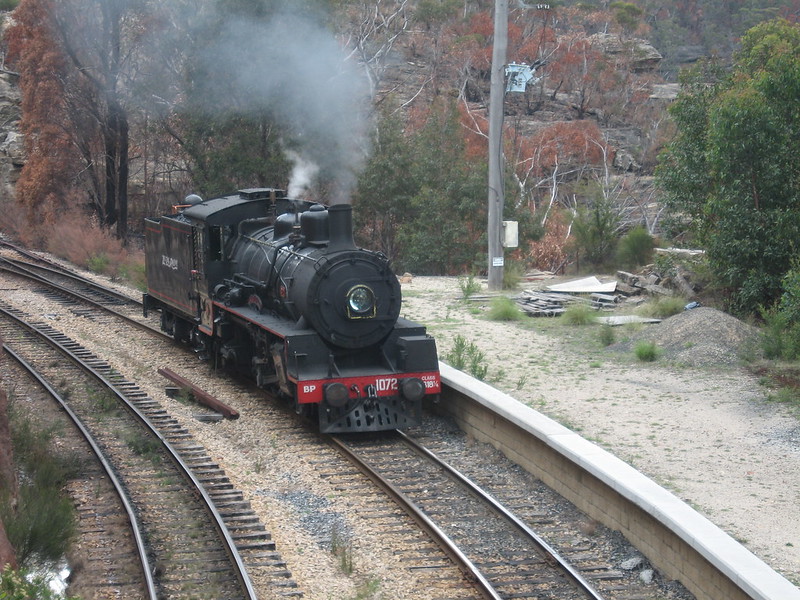If you’re looking for fun things to do in Lithgow, you’ve come to the right place! In this article we’ll talk about the Glow Worm Tunnel, Hassan’s Wall, the Lithgow Small Arms Factory Museum, and Lake Wallace. And of course, you can’t go wrong with any of these attractions. If you’re new to the area, check out these tips for visiting Lithgow.
Glow Worm Tunnel
The Glow Worm Tunnel is a disused railway tunnel located between Lithgow, New South Wales, and the town of Newnes, New South Wales in Australia. It is notable for its glowing resident glow-worms. These creatures are the larvae of the bioluminescent fungus gnat, Arachnocampa richardsae. The Glow Worm Tunnel is a unique place for you to see these incredible creatures.
The Glow Worm Tunnel is well maintained and easy to find, while the Dry Canyon walk is not well marked. There are plenty of side roads along the way to get to the Glow Worm Tunnel. Once at the Glow Worm Tunnel, you can explore the area with the help of the Blue Mountains Heritage Centre. You can also download the free NSW National Parks app to explore the region without being tied to a mobile phone network.
After exploring the Glowworm Tunnel, you can continue your walk through the tree fern wonderland. This is a great way to end your hike. The Glow Worm Tunnel is one of the two abandoned railway tunnels in Lithgow, NSW. It is rough and home to a variety of wildlife, so do not expect a smooth ride. It is best to avoid it at night.
Hassan’s Wall
If you’re looking for a place to go horseback riding in NSW, you’ve probably heard of Hassan’s Wall in Lithgow. This reserve is home to 13 single track riding trails that generally follow ridge lines. You can also choose to shuttle or do a loop.
Located approximately 1,100 metres above sea level, Hassan’s Wall is a must-visit for anyone in the area. The scenic overlook provides unmatched views of the surrounding countryside and mountains. From the lookout, you can even see the Kanangra Walls. There are picnic shelters and restrooms on the site, and sunsets are a must-see! But before you visit, make sure to research safety precautions in the area to prevent any mishaps. Be sure to wear appropriate footwear and follow the signs to avoid slipping and falling.
Lithgow Small Arms Factory Museum
Visit the Lithgow Small Arms Factory Museum to learn about firearms and gun technology. Located in a former precision engineering factory, the Museum explores the history and technology of firearms. The exhibitions explore everything from a single shot to the development of modern automated firearms. It’s a fascinating experience! A must for firearms lovers and history buffs alike! There are also plenty of activities for kids, including laser tag and archery.
The museum has an extensive collection of memorabilia, photographs and industrial records, spanning from the founding of the factory in 1912. The collection also includes non-military items, such as hand cuffs and medical implants. In addition to firearms, the museum contains an extensive collection of handguns. A recent donation from a local gunsmith, Ron Hayes, includes rare and antique handguns. These are featured in the Hayes Gallery, along with gold-plated hand-engraved presentation masterpieces.
The Lithgow Small Arms Factory museum celebrates the history of Australia’s first high-precision mass-production facility. Visitors can see a range of weapons, including rifles, sub-machine guns, ordnance, and even commercial products. With a wide variety of weapons on display, this museum will provide visitors with the ultimate experience in precision engineering. Whether you’re a history buff or just interested in modern-day weaponry, the Lithgow Small Arms Factory Museum is the perfect destination for you.
Lake Wallace
The Lithgow Council leases this lake from EnergyAustralia. The lake is popular with the community for fishing, kayaking, and dog walking. Other amenities include a baseball diamond, the Wallerawang Sailing Club, and the Lake Wallace Community Boating Centre. There are a variety of events that are happening at Lake Wallace this summer.
The town centre is just a short drive away and is located 10 minutes away. The town centre is an excellent place to grab a bite or stock up on supplies. If you need some suggestions on what to do in Lithgow, there are also many visitor information centres within walking distance. Alternatively, you can head to a nearby golf course and enjoy the view from there. Either way, Lake Wallace is the perfect place for a family outing.
The town was originally a coal-fired power station, which opened in 1957. Its location and construction made the town an important stopover between Sydney and the farming areas beyond Mudgee. The area became a major stopover for convict servants, and a stone school was built in 1860 by the widow of James Walker. Then, in 1869, a railway reached Lithgow. The railway brought residents closer to the town. In 1876, the town grew adjacent to the railway.
Lithgow State Mine Heritage Park
If you’re traveling in the Central Tablelands of Australia, you’ll want to make sure you include the Lithgow State Mine Heritage Park & Railway in your itinerary. A mine museum of the 19th century, the Lithgow State Mine Heritage Park & Railway is an excellent choice. Featuring a collection of mining artifacts, mine tours, and a train ride through the historic mines, the park’s educational experience will help you learn about the history of coal mining in this region.
In addition to the state mine, Lithgow also has several attractive gardens and reserves to visit. Queen Elizabeth Park, located across from the Theatre Royale on Main Street, features rose gardens, a war memorial, water features, and picnic areas. Lithgow’s scenery is breathtaking. It’s the gateway to the Blue Mountains, as well as the country heart of New South Wales.
Zig Zag Railway
The Zig Zag Railway in Lithgow, New South Wales, Australia, is an unpaid heritage railway, operated by a not-for-profit organisation. The railway is the only one of its kind in the country, and is an absolute must-visit for any train enthusiast. Its journey is more than just a train ride. You’ll get a great sense of the local history and the culture.
The Great Zig Zag Railway in Lithgow is owned by volunteers, and there are a small number of paid staff. The railway opened 106 years ago, and is now run by a trust. The railway was originally a public reserve, and the Blaxland Shire Council oversaw its operation until 1946. However, after the railway opened to road traffic, the Hassan’s Walls Trust began negotiations to open the site for public use.
The State Government has contributed almost $1 million to restore the Zig Zag railway. The railway was shut down after suffering bushfires and storm damage in 2013. However, the NSW Government will contribute another $881,000 toward the project. With the NSW Government’s contribution, the railway will reopen in the later part of the year. The funds will help restore the railway workshop building, replacing structural steel, cladding, retaining walls and roofing.
Ida Falls
Ida Falls is a short walk from Lithgow. The walk has a steep slope and a few logs, but no rock scrambles or abseils. It’s a lovely little walk that’s not too long. However, if you’re worried about heights, I’d recommend the walk to someone else. Located on the outskirts of Lithgow, Ida Falls is not the kind of hike that you’d want to do with kids.
The walk route passes through Blast Furnace Park, Lake Pillans Wetlands, and Ida Creek. There’s a mostly good track to follow, and then you’ll have to go through a historic culvert to reach the waterfall. Afterward, take the 304 bus back to Lithgow station. The walk is graded 3 because of a few short awkward sections, such as a creek crossing on logs. There are also a few rough steps.
Eskbank House and Museum
For a fascinating glimpse into the past, visit the Eskbank House and Museum in Lithow, NSW. The house and its surrounding estate was built in 1842 by Thomas Brown. The museum exhibits an extensive collection of early Lithgow pottery and displays of regency and early Victorian furniture. The museum also displays a static steam engine. For visitors who want to learn more about the house and its history, there are also a number of programs on offer.
As part of a historical program, you will learn about the rich history of the area. The Eskbank House and Museum in Lithgow is a sandstone home that once served as the main center for the mining industry. Its beautiful gardens and lush grass contrast beautifully with the large black hillside landscape. You’ll also be able to explore the blacksmith’s shop and the museum’s early Victorian furniture, including a gorgeous hand-carved, scrolled, and grained wooden desk.
10 interesting facts about Lithgow
- Lithgow is a city located in the Central Tablelands region of New South Wales, about 150 kilometers west of Sydney.
- The city is known for its history of coal mining and heavy industry, with a number of heritage-listed sites related to these industries.
- The city is located in a region with a rich Aboriginal history, with many important cultural sites in the surrounding area.
- Lithgow is home to a number of museums and heritage sites, including the Zig Zag Railway, which offers train rides through the Blue Mountains.
- The city is located near the Blue Mountains National Park, which offers opportunities for hiking, mountain biking, and other outdoor activities.
- Lithgow is home to several sporting teams, including the Lithgow Panthers Rugby League Football Club and the Lithgow Workies Rugby Union Football Club.
- The city is known for its annual Winter Festival, which includes a range of events and activities for the whole family.
- Lithgow is home to several schools and education institutions, including the Western Institute of TAFE and the Lithgow Campus of the University of Sydney.
- The city is home to several churches and religious institutions, including the St Mary’s Catholic Church, which was built in the early 1900s.
- Lithgow has a number of public parks and gardens, including the Memorial Park, which features a war memorial and a rose garden.

